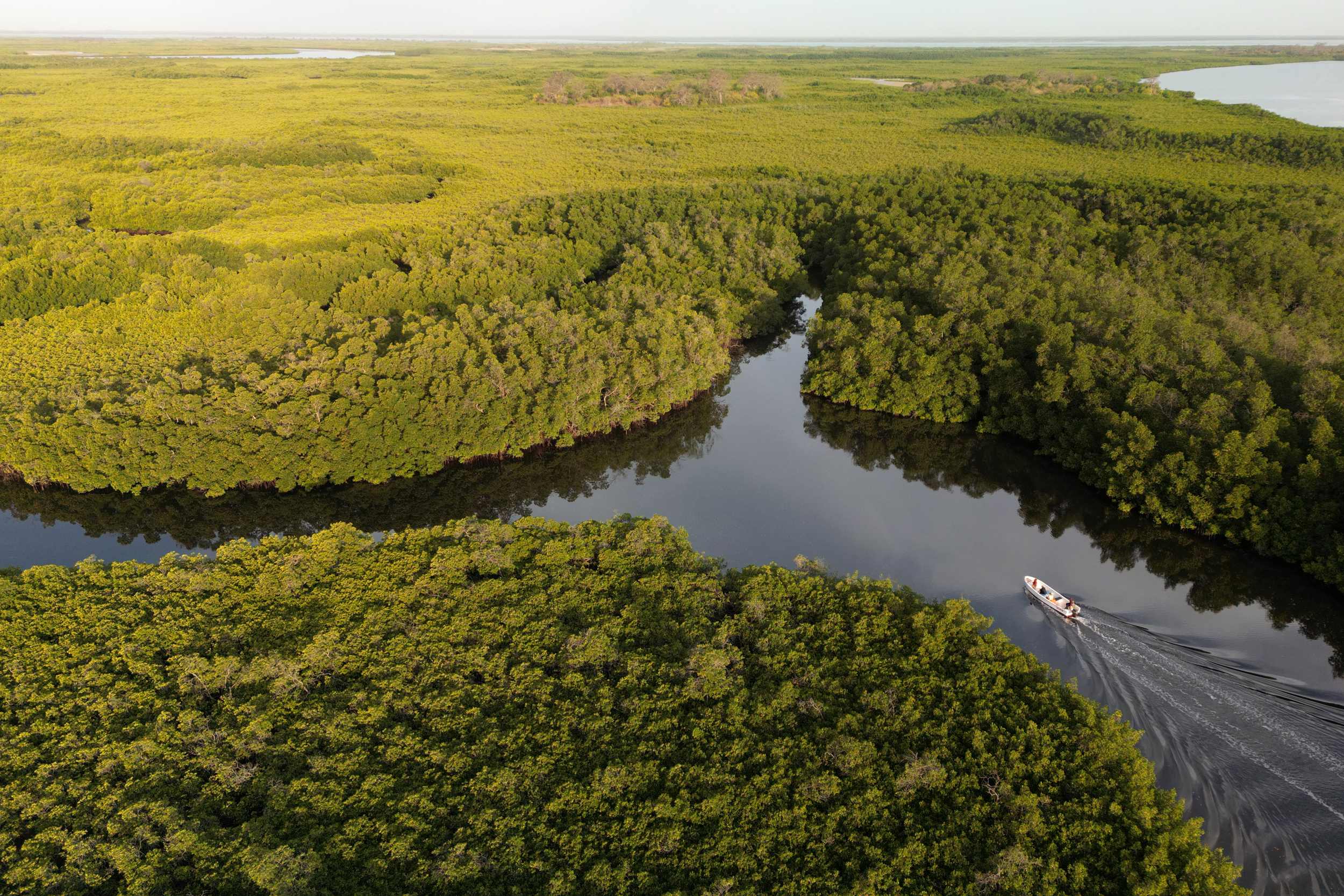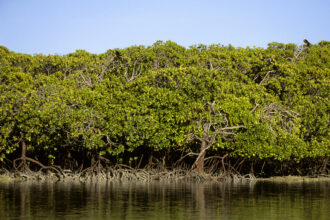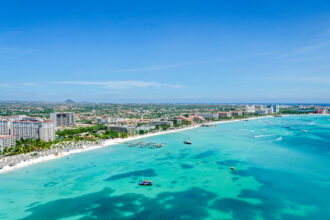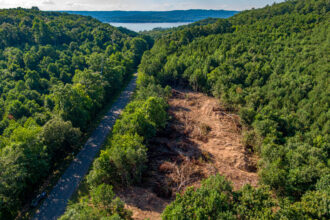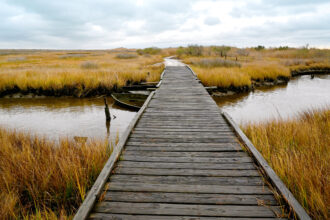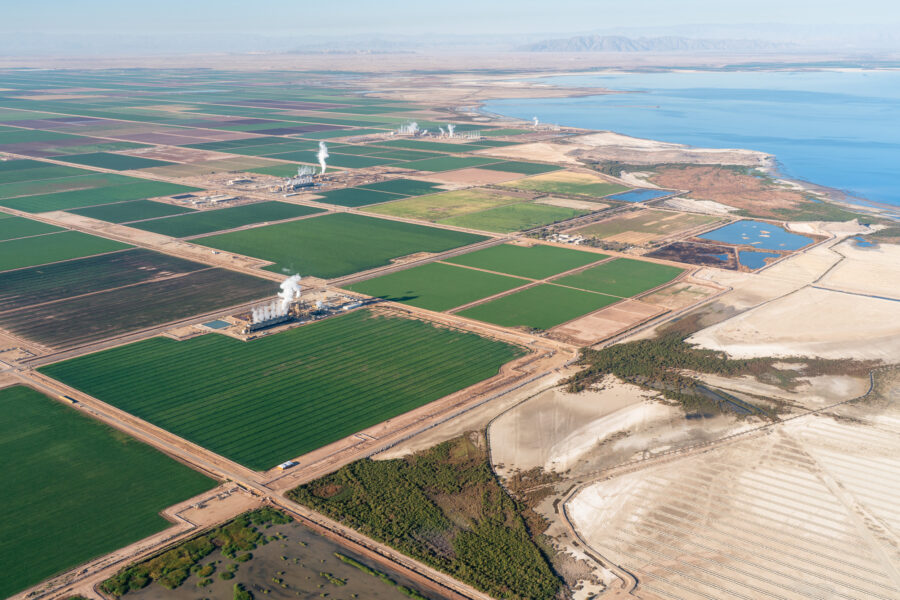Dark green mangrove forests grow along shores from Indonesia to South Florida, with roots tangling out of the water. Scientists have continuously marveled at their myriad abilities: to survive in saltwater, to bear the brunt of severe storms, to support reefs and fish and to absorb a tremendous amount of climate-warming carbon—three to five times more per acre than mature tropical forests.
What hasn’t been clear is how well mangroves planted by people store carbon compared to stands that developed naturally.
Now, decades of data reveal that, in 20 years of growth, successfully planted mangroves can reach up to 73 percent of the carbon stock levels found in naturally occurring mangrove stands. In a new study published in Science Advances, a group of international researchers looked at 684 planted mangrove stands to come to this conclusion.
“What I found really cool was the number of sites that they had all over the world,” said Ken Krauss, one of the study’s authors and a research ecologist at the U.S. Geological Survey’s Wetland and Aquatic Research Center.
Previous studies on carbon build-up in mangroves focused on individual sites rather than hundreds of them, he said.
Around 35 percent of the world’s mangroves have been lost in the past half-century to land disturbance, severe weather events and erosion, according to earlier research. These ecosystems can act as a natural barrier to severe storms and help stabilize soil and sand to prevent erosion. But the rise in mangrove restoration around the world is driven in no small part by the idea that they help offset greenhouse gas emissions.
The new study provides actual numbers after decades of hoping for the best.
“The real strength of the paper is it shows that this is really kind of a global pattern,” said Daniel Friess, a coastal scientist at Tulane University who was not involved with the study. Location and planting conditions don’t change how carbon accumulates in these types of mangroves, he noted.
An aspect the paper didn’t analyze that both Friess and Krauss considered worth future study is the disturbance history of sites. The carbon impact to a mangrove disturbed by shrimp ponds, which involves digging out soil, isn’t the same as one disturbed by a cyclone, Friess said.
And although the study focuses on successfully planted mangroves, Friess added that the paper offers more evidence for why restorations need to be done right. Many attempts fail.
“If it’s successful, then yes, you can get 75 percent of the carbon stocks of a natural forest,” he said. “If you do it unsuccessfully, you get zero.”
Whether planted mangroves could ever more closely match the carbon-storing power of naturally occurring stands remains to be seen. They might need more time to grow than the 40 years the study considered; some intact mangroves are far older.
For Dominic Wodehouse, executive director for Mangrove Action Project, which helps coastal communities recover and restore mangroves, one of the messages in the paper is “always protect what you’ve got first before trying to do some restoration.” Natural, intact mangroves hold onto more carbon, noted Wodehouse, who was not involved in the study.
For now, “mangrove restoration in particular is not a silver bullet to climate change,” said Friess, the coastal scientist. It might offset some fossil fuel emissions, but it won’t do the hard task of decarbonizing economies, he said.
Still, mangroves offer “many awesome things,” Friess said. Coastal communities might particularly value the role these species play in cyclone protection and healthy ecosystems for fisheries.
“Carbon is a nice umbrella that if we can restore something for carbon, then we’re going to restore all of these other great benefits as well,” Friess said.
About This Story
Perhaps you noticed: This story, like all the news we publish, is free to read. That’s because Inside Climate News is a 501c3 nonprofit organization. We do not charge a subscription fee, lock our news behind a paywall, or clutter our website with ads. We make our news on climate and the environment freely available to you and anyone who wants it.
That’s not all. We also share our news for free with scores of other media organizations around the country. Many of them can’t afford to do environmental journalism of their own. We’ve built bureaus from coast to coast to report local stories, collaborate with local newsrooms and co-publish articles so that this vital work is shared as widely as possible.
Two of us launched ICN in 2007. Six years later we earned a Pulitzer Prize for National Reporting, and now we run the oldest and largest dedicated climate newsroom in the nation. We tell the story in all its complexity. We hold polluters accountable. We expose environmental injustice. We debunk misinformation. We scrutinize solutions and inspire action.
Donations from readers like you fund every aspect of what we do. If you don’t already, will you support our ongoing work, our reporting on the biggest crisis facing our planet, and help us reach even more readers in more places?
Please take a moment to make a tax-deductible donation. Every one of them makes a difference.
Thank you,

